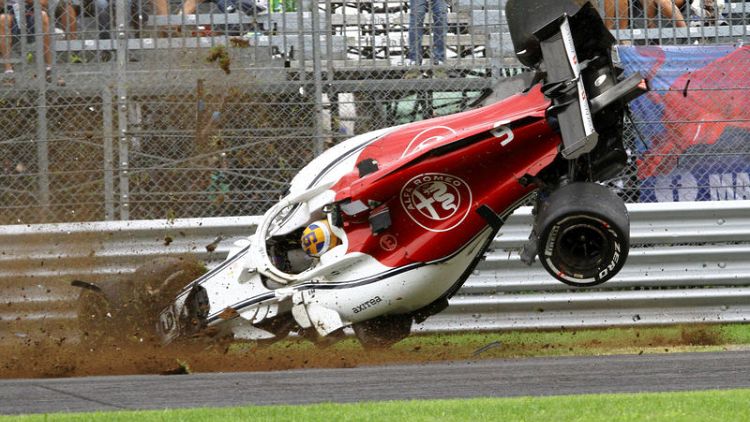By Alan Baldwin
MONZA, Italy (Reuters) - Sauber have corrected a 'small design flaw' on the car's rear wing that contributed to Marcus Ericsson's spectacular crash in Italian Grand Prix practise, Formula One race director Charlie Whiting said on Saturday.
Ericsson's car speared head-on into the barriers on Friday as the Swede braked at the end of the Monza pit straight, with television replays suggesting a failure of the DRS (drag reduction system).
Whiting confirmed to Reuters that the flaw concerned the DRS flap.
He told reporters that the car had stood up well to the impact, with all the wheels remaining attached to their tethers and the driver emerging unscathed from the wreckage.
Ericsson was able to return to the track for Saturday's final practise after Sauber mechanics broke an overnight curfew, allowed in the rules twice in a season, to rebuild the car and present it for scrutineering.
The crash was the second big one involving a Sauber in successive races, with Ericsson's Monegasque team mate Charles Leclerc retiring on the first lap in Belgium last weekend after his car was hit by Fernando Alonso's McLaren.
In that incident, the McLaren flew high into the air and over the Sauber after being shunted by Renault's Nico Hulkenberg.
The new 'halo' head protection device introduced this season was widely seen as having saved 20-year-old Leclerc, regarded as a future Ferrari driver, from serious injury or worse.
Whiting could not say for certain whether it had saved Leclerc's life, with investigations and research ongoing, but confirmed that the McLaren's front suspension was broken by contact with the halo.
He said initial conclusions were that the device had been hit with an estimated load of 56 kilonewtons, roughly equal to half of that thrown at it in testing with the impact in exactly the same place.
The halo had taken it without distortion or buckling, added Whiting.
"The Sauber guys have crack tested it and it seems to be absolutely fine," he said.
International Automobile Federation (FIA) president Jean Todt, sitting alongside Whiting at the briefing, said a detailed report on the incident had emphasised the heavy impact between Alonso's front wheel and the halo.
"When you look at the video, frame by frame, you can see that the suspension was actually broken by the contact with the halo. So that gives you a measure of the sort of loads that were involved," said Whiting.
(Reporting by Alan Baldwin, editing by Clare Fallon)
